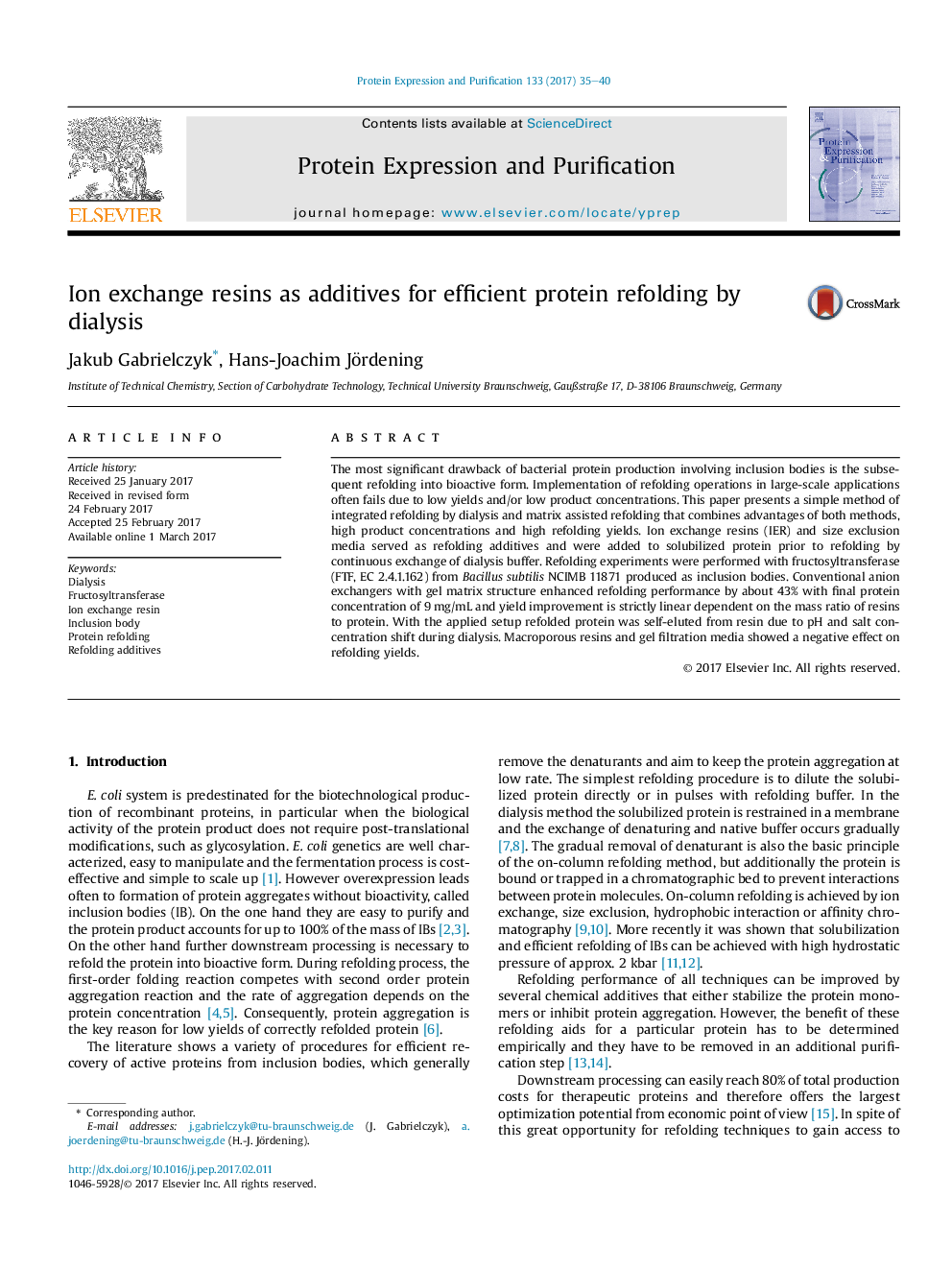| Article ID | Journal | Published Year | Pages | File Type |
|---|---|---|---|---|
| 5516137 | Protein Expression and Purification | 2017 | 6 Pages |
â¢We used a simple method of integrated refolding by dialysis and matrix assisted refolding with IER.â¢Addition of IER with gel matrix resulted in enhanced refolding performance up to 43% and product concentration of 9 mg/mL.â¢Refolding improvement correlates linearly with applied mass ratio of resins to protein.â¢Protein is self-eluted from resins during refolding process due to pH shift.
The most significant drawback of bacterial protein production involving inclusion bodies is the subsequent refolding into bioactive form. Implementation of refolding operations in large-scale applications often fails due to low yields and/or low product concentrations. This paper presents a simple method of integrated refolding by dialysis and matrix assisted refolding that combines advantages of both methods, high product concentrations and high refolding yields. Ion exchange resins (IER) and size exclusion media served as refolding additives and were added to solubilized protein prior to refolding by continuous exchange of dialysis buffer. Refolding experiments were performed with fructosyltransferase (FTF, EC 2.4.1.162) from Bacillus subtilis NCIMB 11871 produced as inclusion bodies. Conventional anion exchangers with gel matrix structure enhanced refolding performance by about 43% with final protein concentration of 9Â mg/mL and yield improvement is strictly linear dependent on the mass ratio of resins to protein. With the applied setup refolded protein was self-eluted from resin due to pH and salt concentration shift during dialysis. Macroporous resins and gel filtration media showed a negative effect on refolding yields.
